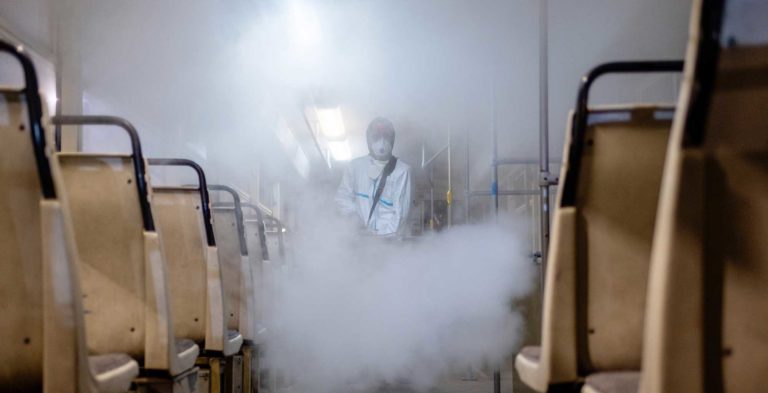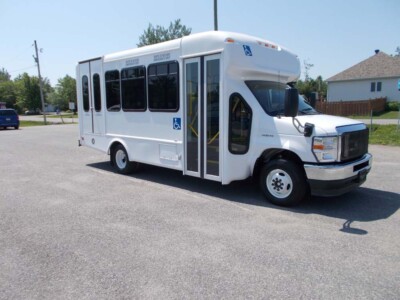Focusing on bus disinfection to enhance passenger safety during a pandemic is crucial. Whether operating a large transit bus fleet or a single shuttle bus, you provide an essential service for your community. You connect hundreds of people together through transportation, which means an increased risk of spreading viruses and disease. This is especially important to be mindful of during a pandemic.
Your job is crucial for the community, so protecting the health and safety of passengers and drivers is a top priority. The COVID-19 pandemic has pushed many manufacturers to introduce new products and options for bus disinfection. Crestline’s experienced team is here to help you understand the available options and features that can limit the spread of disease. Here is a useful list of things to help you find the right bus disinfection technology for your passenger safety.
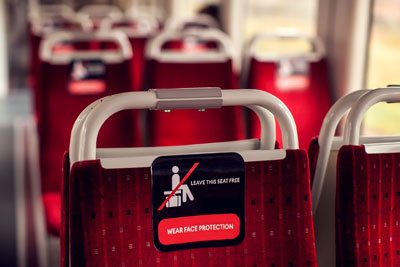
Promote physical distancing in your bus.
The World Health Organization recommends maintaining at least 1-meter (3 feet) distance between yourself and others for COVID-19. Help your users maintain social distancing by placing signage on your bus. Many options are available, such as social distance seat barriers, transparent partitions, seat bands, and signage that prevent seat occupancy.
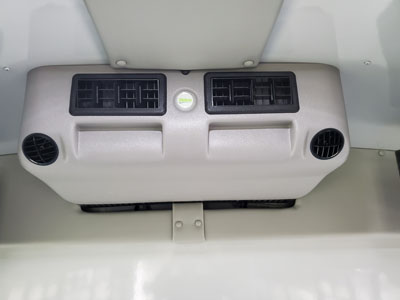
Double-check airflow and filtration system.
Filtration has become an important area of focus, as COVID-19 spreads mainly through respiratory droplets and airflow. HEPA (High-Efficiency Particulate Air) filters or air filtration systems are simple to install and can be retrofitted to your current fleet. Common standards require a HEPA filter to remove 99.97% of particles whose diameter equals 0.3 microns (Wikipedia, 2020).
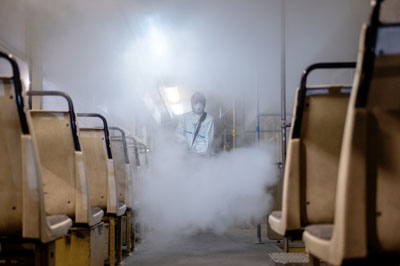
Schedule bus disinfection and decontamination.
Bus disinfection routine is crucial. There are many options for self-contained and portable devices for air disinfection or surface decontamination for reducing the spread of infectious diseases. The most commonly sought-after are systems such as ultraviolet light disinfection, chemical-based fogging systems, and ozone generators.

Install driver and passengers protection equipment.
Driver and passenger barrier shields are now available in soft clear vinyl or plexiglass. Easy to clean, replaceable, UV and mildew resistant, these safety enhancements can be installed, replaced, or removed easily. Adding another layer of protection offers peace of mind and improves your bus passenger safety with several options available.
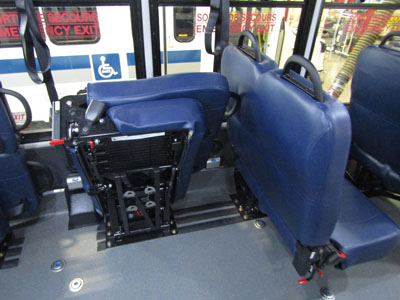
Clean interior surfaces frequently.
When asking what considerations should be given for interior material protections, vinyl flooring and seats should strongly be considered. Interior walls in most buses are constructed with smooth surfaces that can be wiped down and disinfected. For your existing fleets, grab handle covers are easy to install and clean, plus they are made from nanocide vinyl with embedded silver, a natural antimicrobial.
Looking for more information on bus disinfection and passenger safety? Reach out to us! We would love an opportunity to speak with you and provide additional recommendations to help keep your buses clean and running safely during the pandemic.

